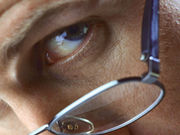Prevalence of those aged ≥45 with best corrected visual acuity less than 20/40 estimated at 3,894,406
FRIDAY, Nov. 3, 2017 (HealthDay News) — Prevalence and incidence rates of low vision and blindness demonstrate a growing need for low vision rehabilitation services in the United States, according to a study published online Nov. 2 in JAMA Ophthalmology.
Tiffany Chan, O.D., from the Johns Hopkins University School of Medicine in Baltimore, and colleagues estimated the prevalence and incidence of visual impairments based on visual acuity measures as a function of age from the 2007-2008 National Health and Nutrition Examination Survey. Data were included from 6,016 survey participants to estimate prevalence rates from different age groups.
The researchers found that among older adults (≥45 years) in 2017, the prevalence of low vision and blindness was estimated at 3,894,406 individuals with a best corrected visual acuity (BCVA) less than 20/40, 1,483,703 individuals with a BCVA less than 20/60, and 1,082,790 individuals with a BCVA of 20/200 or less. The estimated 2017 annual incidence of low vision and blindness among adults aged 45 years and older is 481,970, 183,618, and 134,002 individuals with a BCVA of less than 20/40, less than 20/60, and 20/200 or less, respectively. For each BCVA criterion, the total annual incidence was 12.4 percent of the total prevalence.
“Prevalence and incidence rates show a substantial increase in the need for low vision rehabilitation services with the aging of the US population,” the authors write.
One author disclosed ties to Janssen.
Copyright © 2017 HealthDay. All rights reserved.








